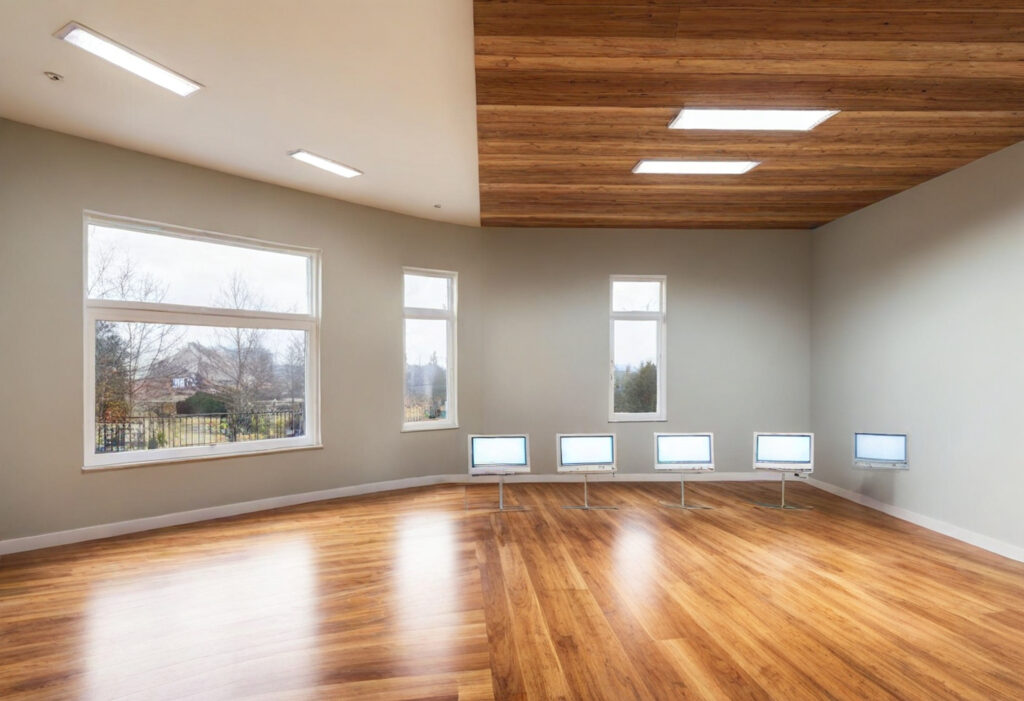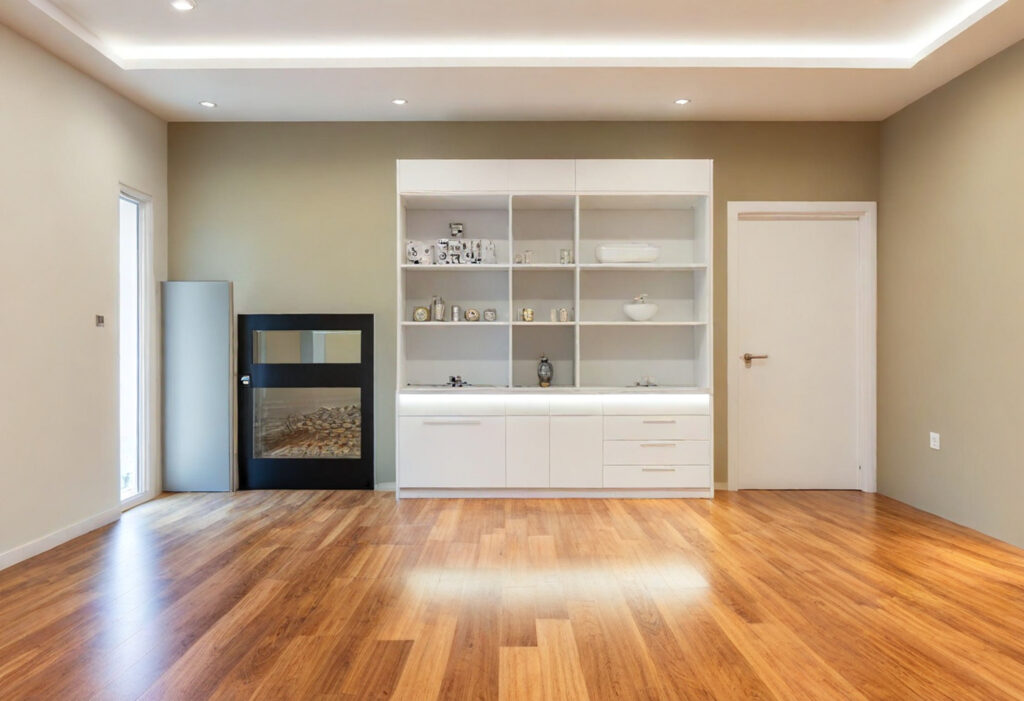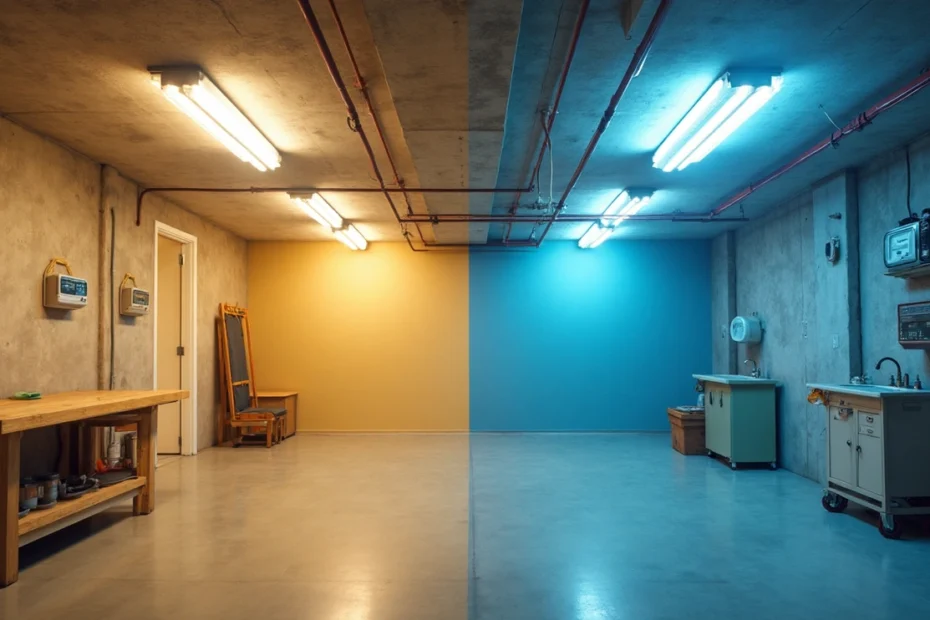The difference between fluorescent light and LED energy consumption in your basement is mind-blowing. LEDs consume up to 75% less energy than fluorescent lights. These modern lights prove to be 44% more efficient than 4-foot fluorescent tubes.
Your basement, garage, and shop lights make up 11% of electricity use in commercial and residential buildings[-3]. This makes the cost comparison between fluorescent and LED lighting crucial to homeowners who want lower energy bills. The savings from switching to LEDs can pay for themselves in less than 6 months. On top of that, LEDs work anywhere from 25,000 to 50,000 hours – about 2-5 times longer than fluorescent bulbs that last between 7,000 to 15,000 hours.
This piece breaks down the real efficiency differences between fluorescent and LED lighting. You’ll learn about long-term costs that help you pick the best lighting option for your basement. We’ll also show how your choice impacts your wallet, comfort level, and environmental footprint.
Understanding LED and Fluorescent Lighting
LED and fluorescent lighting differ in their basic ways of producing light. These technologies work great in basements but through completely different mechanisms.
How LED lights work
LED (Light-Emitting Diode) technology employs semiconductors that turn electricity straight into light. LEDs shine light in one specific direction, which eliminates the need for reflectors that might trap light. Their directional nature makes them highly efficient. They turn 95% of their energy into light and waste just 5% as heat.
LEDs shine at full brightness right away without warming up. This quick response makes them valuable in basements where people need immediate light to move safely.
How fluorescent lights work
Fluorescent lights function as low-pressure mercury-vapor gas-discharge lamps. Electric current flows through the tube and excites mercury vapor, which creates ultraviolet light. This light makes the phosphor coating inside glow or “fluoresce”.
These lights need an electronic or magnetic ballast that controls electricity flow. The lamp would destroy itself from uncontrolled current without this part. People must wait briefly before fluorescents reach full brightness, and the lights might flicker.
Fluorescent tubes contain mercury, which makes them hazardous. Users must handle and dispose of them carefully.
Common use cases in basements
Both types of lights serve basement spaces well, but their best uses depend on specific needs.
Experts now suggest LED lighting for general basement illumination. These lights shine steadily in spaces that need artificial light for long periods. People don’t get eye strain or headaches from flickering. Their tough construction suits hard-to-reach basement fixtures perfectly.
Fluorescent tubes are traditionally lit workshop areas where broad, scattered light works best. LED technology advances have reduced this advantage lately.
LED fixtures offer the quickest way to light most basement spaces. The flat and long design cuts down damage risk while lighting large areas with minimal power—perfect for spaces that people use off and on rather than all day.
Energy Efficiency and Cost Comparison

Raw numbers tell us why LEDs dominate basement lighting these days. A University of Michigan study confirms LEDs are 18%-44% more efficient than T8 fluorescent alternatives. The U.S. Department of Energy backs this up, showing LED systems use 25% less energy than fluorescents.
LED vs fluorescent energy savings
LED and fluorescent technologies show a clear difference in efficiency. LEDs consume 75% less power than fluorescent lights but give you the same or better brightness. This comes down to how each type converts power into light. LED technology turns about 95% of its energy into light and wastes just 5% of heat. Fluorescent fixtures work better than incandescent bulbs but can’t match these impressive numbers.
Power consumption differences
Research shows LED lights slash energy use by half compared to fluorescents. You can replace a 40-watt fluorescent tube with an 18-watt LED tube and cut your energy use by more than 50% without losing any brightness. This matters even more in basements where lights stay on for long periods.
Impact on monthly electricity bills
The money you save with LEDs makes a strong case. Rhode Island and Massachusetts data show households could save $20 million yearly, while businesses could keep $146 million in their pockets. A typical school could reduce its utility bill by more than $5,000 each year by switching all fluorescent bulbs to LEDs.
Here’s the quickest way to figure out your savings:
- Find the power difference between your fluorescents and LED replacements
- Multiply by yearly hours of use
- Divide by 1,000 to get kilowatt-hours
- Multiply by your electricity rate
To cite an instance, if you replace 50 fluorescent bulbs that each save 20 watts and run 12 hours daily at $0.10/kWh, you’ll save about $438 yearly. You’ll break even in 1-2 years, and the savings continue throughout the LED’s longer life.
Lifespan, Maintenance, and Replacement Costs
LED and fluorescent lighting show major differences in lifespan, which leads to big cost implications for basement installations.
Average lifespan of LED vs fluorescent
LED lights last an incredibly long time. Standard models can work for 25,000-50,000 hours, and specialty products might reach up to 200,000 hours. LEDs last 3-8 times longer than their fluorescent counterparts. Most fluorescent tubes work for 7,000-15,000 hours, while premium options can last up to 35,000 hours.
Fluorescent lights don’t handle environmental factors well. Temperature changes and humidity are common problems in basement settings that can reduce fluorescent bulb’s life and performance by a lot. Switching lights on and off frequently cuts down fluorescent tube life drastically, but LEDs barely notice this kind of use.
Replacement frequency and labor costs
LED fixtures’ longer lifespan cuts down on how often you need to replace them. A single LED fixture lasts about 50,000-65,000 hours, and during this time, you would need to swap out fluorescent tubes at least four times. This becomes even more important when you have basements with high ceilings or hard-to-reach fixtures where labor costs add up quickly.
Fluorescent lighting systems need extra care:
- Ballasts usually break down before the tube stops working
- You need professionals to replace each part
- Mercury content means special disposal methods are needed
Long-term maintenance savings
LED lights save money on maintenance over time, even though they cost more upfront. Type B direct-wire LEDs are the cheapest to run and maintain among all options. Longer life means fewer replacements, less work, and fewer waste disposal worries.
LED lighting costs less than fluorescent options when you look at the total ownership cost. Schools that switch from fluorescent to LED lighting can save thousands each year, just by needing less maintenance. Basement lighting becomes hassle-free with LEDs, unlike fluorescent systems that need constant attention.
Environmental and Health Considerations

Your basement lighting choice affects the environment way beyond your monthly power bills. Let’s get into the key differences between these lighting technologies and how they affect health and the environment.
Mercury content and disposal issues
Mercury content stands out as the biggest problem with fluorescent lighting. These bulbs need mercury to work. Each CFL contains about four milligrams of mercury inside its glass tubing. The World Health Organization lists mercury as one of the top 10 most dangerous chemicals that affect public health.
Broken fluorescent lamps need special handling. People must leave the area right away, air out the room for hours, and put all contaminated materials in sealed containers. About 75% of fluorescent bulbs end up in wrong disposal streams. This puts sanitation workers at risk and pollutes our waterways.
Flicker, UV emissions, and eye strain
LED alternatives don’t share the health risks that come with fluorescent lighting. Fluorescent lights can cause eye strain and headaches because they flicker. These lights also give off UV radiation that strains your eyes during long exposure.
LED lights rarely flicker and produce minimal UV light. This makes them a safer choice for basements where natural light is scarce. Your basement workshop or recreation room benefits from this feature since you might spend long hours under artificial light.
The carbon footprint of each lighting type
LED lights offer more environmental benefits beyond energy savings. These lights contain no mercury, making them safer to use and dispose of. They need less power, which means lower carbon emissions, especially if your electricity comes from fossil fuels.
The environmental benefits show up throughout the product’s life. LED lights last longer, so you need fewer replacements and create less manufacturing waste. On top of that, recycling facilities handle LED components more easily, and their disposal creates less hazardous waste.
Conclusion
LED technology outperforms fluorescent lighting options for basements. LEDs use 75% less energy and last 3-8 times longer than fluorescent lights. Many homeowners recover their investment within 6-12 months through lower utility bills.
LED lighting eliminates several major problems that plague fluorescent options. LED lights don’t contain mercury, which makes them safer for families and the environment. Your eyes won’t strain from flickering, especially when you have limited natural light in basement spaces.
LED technology’s durability makes it perfect for basement environments. LED lights handle temperature changes, humidity, and frequent switching without losing performance. These conditions commonly affect below-grade spaces. LED fixtures need minimal maintenance and work reliably even in hard-to-reach spots.
Choosing between LED and fluorescent lighting comes down to comparing upfront costs with long-term benefits. Fluorescent lights might cost less at first. However, LED technology ended up delivering better performance, safety, and savings over its longer lifespan. LED lights are the smarter choice for your basement’s lighting needs – they protect your home, save money, and give you peace of mind.
